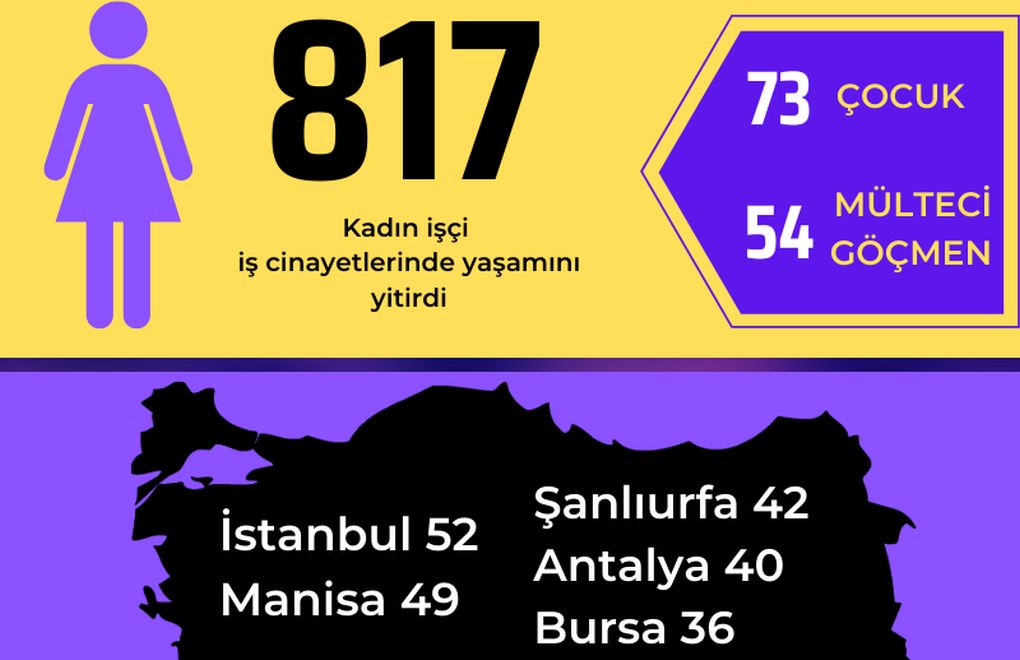Click to read the article in Turkish
On March 8 International Women's Day, the Health and Safety Labor Watch (İSİG Assembly) has shared data about the number of women who have lost their lives in occupational homicides in the last 7 years.
According to the figures announced by the İSİG Assembly, at least 817 women lost their lives in occupational homicides from 2013 to 2019.
Other highlights from the report are as follows:
* While at least 103 women died in occupational homicides in 2013, the figure was at least 131 in 2014, at least 121 in 2015, at least 110 in 2016, at least 117 in 2017, at least 120 in 2018 and at least 115 in 2019.
* 54 of 817 deceased women were refugees/immigrants (34 from Syria, six from Georgia, five from Uzbekistan, two from Russia, one from the US, one from Afghanistan, one from Japan, one from Kyrgyzstan, one from Colombia, one from Moldova and one from Turkmenistan).
* While 148 deceased women were farmers and 48 were shop owners, 621 women were wage earners (workers and civil servants).
* 98 percent of the women who lost their lives in occupational homicides over the past 7 years were not unionized.
Highest number of homicides in agriculture
* The figures of the İSİG Assembly have shown that the highest number of occupational homicides occurred in agriculture-forestry sector.
* Accordingly, 419 women (271 workers and 148 farmers) lost their lives in occupational homicides in agriculture-forestry, 85 died in the sectors of trade, bureau, education and cinema, 54 women lost their lives in the sectors of textile and leather and 39 women died in municipal affairs.
Traffic accidents were the most frequent cause of death
* As for the causes of death of women workers in occupational homicides, the most frequent cause was traffic accidents.
* Accordingly, 55 percent of women died in traffic and service vehicle accidents, which were followed by being crushed-trapped under debris (with 9 percent) and by incidents of violence (with 7 percent).
* While 451 women lost their lives in traffic and service vehicle accidents, 73 women were crushed or trapped under debris, 56 women died in incidents of violence, 47 women lost their lives as result of heart attack or brain hemmorage, 34 women fell from a high place, 28 women were poisoned or suffocated, 24 women were burned to death, 24 women committed suicide, 21 women died in an electric shock and 59 women died of other causes.
Emphasizing the importance of a division of labor based on gender equality, the İSİG Assembly has also listed a series of recommendations to prevent the death of women in occupational homicides. (RT/SD)






